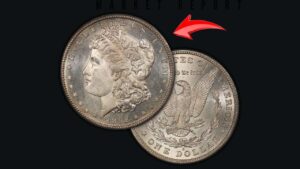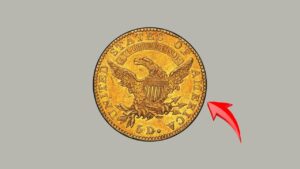Although it may resemble ordinary pocket change, the 1913 Liberty Head nickel is anything but average. This legendary 5-cent coin recently fetched around $5 million, making it one of the most valuable coins in American numismatic history. With only five ever minted and just three currently in private hands, this coin’s story is as mysterious as it is valuable. From secretive minting to mistaken identity, the journey of the 1913 Liberty Head nickel reads like a Hollywood script—with a payoff that could change a collector’s life.
The Coin That Was Never Supposed to Exist
The Liberty Head design was officially retired in 1912 to make way for the new Buffalo nickel. Yet, in a surprising twist, five Liberty Head nickels dated 1913 were quietly produced at the Philadelphia Mint—without any official authorization.
The origin of these coins has long been shrouded in speculation. Many historians believe Samuel Brown, a former Mint employee and avid numismatist, may have orchestrated the secret production. Brown was the first person to publicly display the coins in 1920, leading to suspicions that he either struck them himself or persuaded someone within the Mint to do so.
While no definitive proof has surfaced, these coins rapidly became the holy grail of U.S. coin collecting, not just for their scarcity, but also for their intrigue.
The Mysterious Tale of the Walton Nickel
Among the five known Liberty Head nickels, the most famous is the Walton nickel. Owned by George O. Walton, the coin was tragically sidelined for over 40 years due to a case of mistaken identity.
In 1962, Walton died in a car accident while en route to a coin show with his prized Liberty Head nickel. After his death, the coin was returned to his family but was deemed a counterfeit by experts unfamiliar with the coin’s nuanced features. For decades, it sat untouched in a Virginia closet, believed to be worthless.
Then came the breakthrough. In 2003, organizers of a major coin convention launched a nationwide hunt for the long-lost fifth Liberty Head nickel. Walton’s heirs submitted their dusty coin for re-evaluation. In a highly secure room in Baltimore, a panel of six top numismatists verified the coin’s authenticity—confirming it was the missing Walton nickel.
In 2013, the coin was sold for $3.1 million. It was later acquired by the Firman family of Florida, who have since shared it with the public through museum exhibits and numismatic conventions.
Why Is the 1913 Liberty Head Nickel So Valuable?
The Liberty Head nickel commands multimillion-dollar prices not just because of its rarity—but due to its enigma, history, and drama. Here’s what drives its astronomical value:
| Value Driver | Description |
|---|---|
| Extreme Rarity | Only 5 coins ever minted |
| Unofficial Origin | Possibly created without Mint approval |
| Historical Intrigue | Linked to Mint insider Samuel Brown |
| Museum Holdings | 2 coins are in public institutions |
| Private Ownership | 3 coins held by collectors unlikely to sell soon |
| Rediscovery Story | Walton nickel’s 40-year disappearance adds allure |
What This Coin Teaches Us About Hidden Treasure
Finding a 1913 Liberty Head nickel in your change is nearly impossible—but the story of the Walton nickel proves hidden treasures do exist. Once thought to be worthless, it became one of the most sought-after coins in history.
This tale encourages collectors and everyday people alike to stay curious and check their spare change. Rare coins and other collectibles can sometimes hide in plain sight. With the right knowledge and a bit of luck, a life-changing discovery might be closer than you think.
FAQs
Why were they made if the design was retired?
The coins were never officially sanctioned. It’s believed they were secretly produced by a Mint employee.
Where are the coins now?
Two are in museums (Smithsonian and ANA Money Museum), and three are held by private collectors.
How much is one worth today?
They’ve sold for between $3 million and $5 million, depending on condition and provenance.
Could I have one in my possession?
It’s extremely unlikely, but coin collectors always recommend checking old change—just in case.




